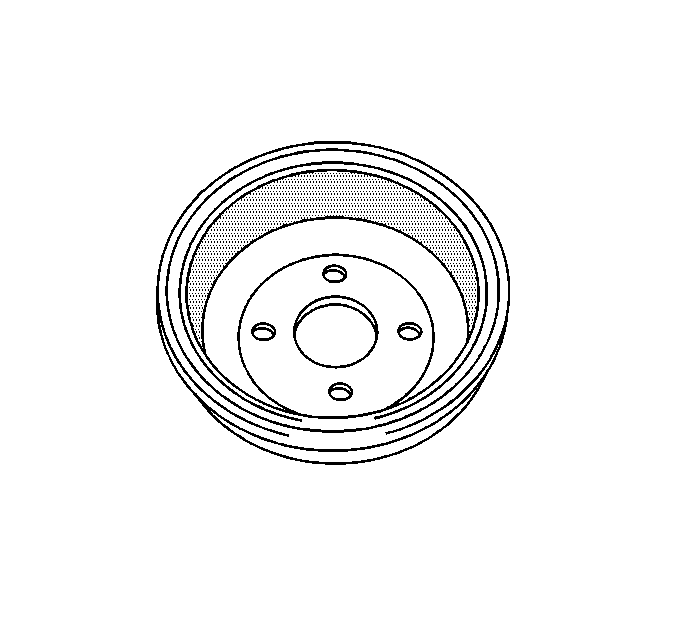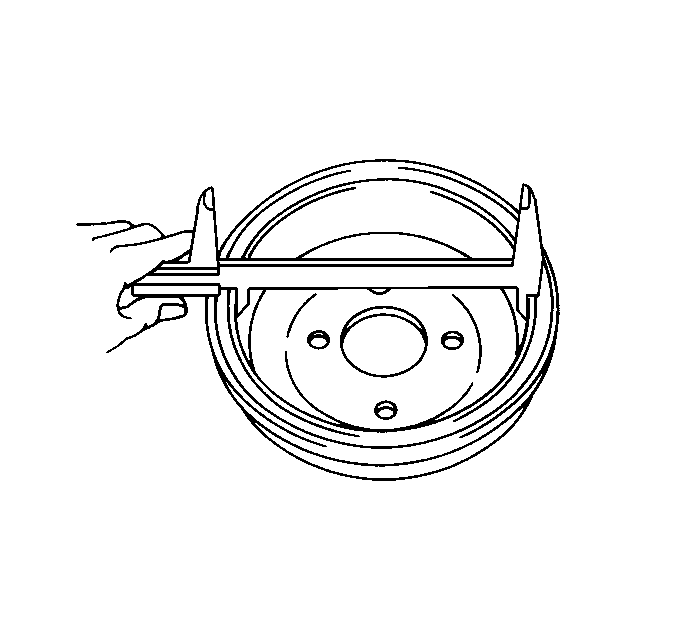Surface Finish
Whenever brake drums are removed, thoroughly clean and inspect the drums
for the following conditions:

Minor surface wear is normal and will not affect brake operation. However,
ensure that the inside diameter does not exceed the maximum specification.
Refer to Inside Diameter Check for more information.
Always replace a cracked drum. A cracked drum is unsafe for further
use. Do not attempt to weld a cracked drum. Smooth up any light scores. Heavy
or excessive scoring will cause excessive brake lining wear. Resurface the
drum braking surface, as necessary, if the brake lining is excessively worn.
If you are replacing the brake linings, always refinish a grooved drum.
A grooved drum, if used with a new lining, will wear the lining and make proper
brake performance difficult to obtain.
If the brake linings are slightly worn (but to be reused) and the drum
is grooved, polish the drum using a fine emery cloth. Do not refinish the
drum. Eliminating all of the grooves in the drum and smoothing the ridges
on the lining requires the removal of too much metal and lining. If left
alone, the grooves and ridges match and satisfactory service may be obtained.
Inside Diameter Check
| • |

Ensure that the maximum
inside diameter of the drum does not exceed 201.0 mm (7.913 in). |
| • | If the inside diameter exceeds maximum limits, the proper heat
dissipation will be adversely affected and may cause distortion of the drum. |
| • | Before refinishing a drum, measure the inside diameter. During
refinishing, only remove enough metal in order to obtain a true, smooth braking
surface. |
| • | If a drum will not true up when refinished to the maximum allowable
inside diameter specification, replace the drum. |
Taper and Runout Checks
An out-of-round or improperly tapered drum may cause the following conditions:
| • | Inaccurate brake shoe adjustment |
| • | Excessive wear of other parts due to its eccentric action |
| • | Irregular tire tread wear |
| • | A pulsating brake pedal |
When the drum exceeds the specification limits for out-of-round and/or
taper, refinish the drum in order to true up the braking surface. Replace
the drum if the drum cannot be brought within specifications by refinishing.
When measuring a drum for out-of-round, taper, and wear, complete the
measurements at the following locations:
| • | The open and closed edges of the machined surface |
| • | At right angles to each other |
Runout is a low spot in the roundness of a drum. If runout exceeds the
maximum specification, replace the drum. Improper stopping or pulsating brakes
could result.
Use the following specifications:
| • | Out-of-round (Maximum) - 0.01 mm (0.0004 in) |
| • | Taper (Maximum) - 0.1 mm (0.004 in) |
Balance
When brake drums are manufactured, the following actions occur:
| • | The brake drums are balanced. |
| • | Weights are welded in place, as required. |
Do not remove any of these weights.
Inspect the balance of the drum on an off-vehicle balancer. Replace
an out-of-balance drum.


